Musée Yves Saint Laurent, France
The Musée Yves Saint Laurent is Paris's latest must-see destination, an extensive and deeply personal look through the life and works of the revolutionary fashion designer - who embodied the spirit of the 'Swinging Sixties'
8 Apr 20 · 10 mins read
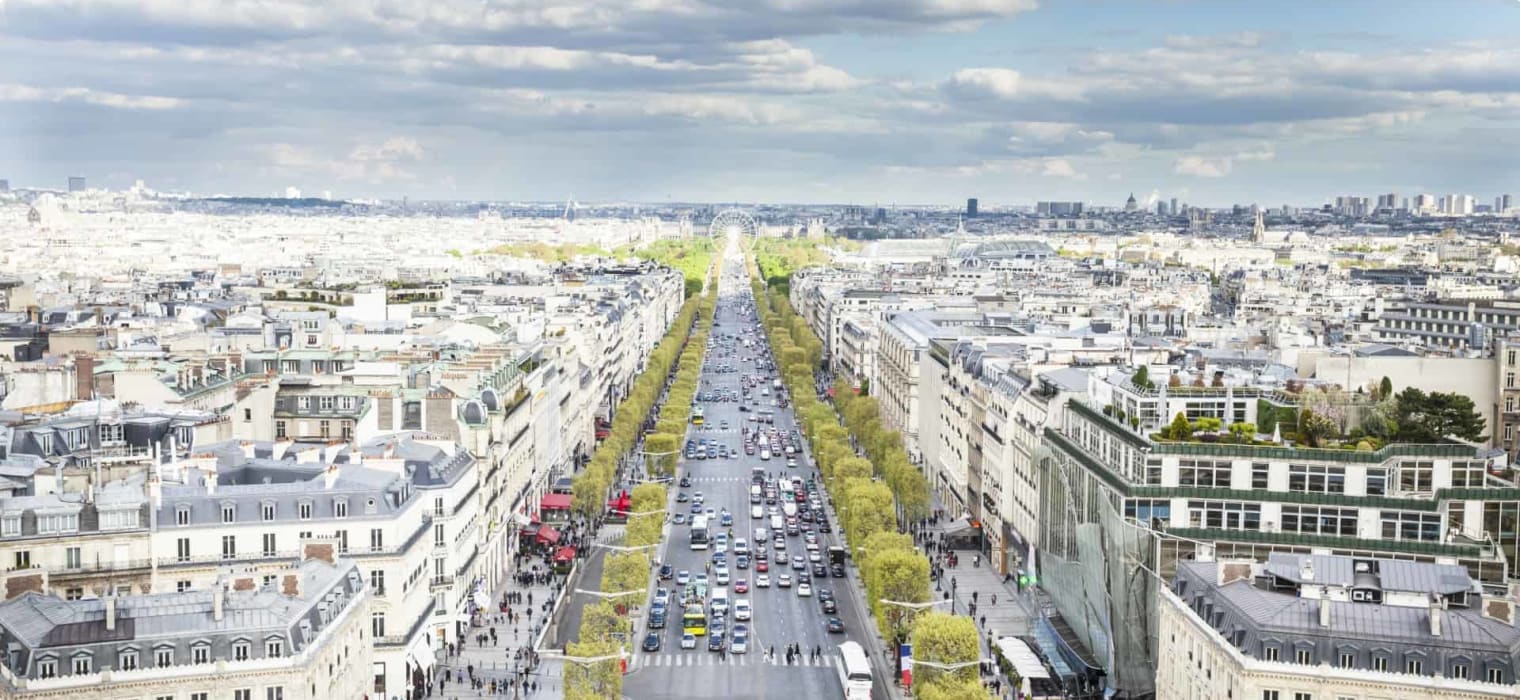
Musée Yves Saint Laurent, France
Opened in 2017, the Musée Yves Saint Laurent is Paris‘s latest must-see destination, an extensive and deeply personal look through the life and works of the revolutionary fashion designer – who embodied the spirit of the ‘Swinging Sixties’ and created the wardrobe of the empowered woman of the 1970s and beyond. The museum is sure to fascinate both fashion-lovers and fashion-skeptics, placing Saint Laurent’s work within the cultural history of the times in which it was created.
Odyssey Traveller visits the Musée Yves Saint Laurent – along with twenty-two of Paris’s other lesser known museums and art galleries – on our in-depth tour of Paris, 21 Days in Paris. Designed to provide an authentic experience of the city, our clients live like locals in self-catered apartments, gathering for expert forays into the art, literature, history, and fashion of Paris.
About Yves Saint Laurent:
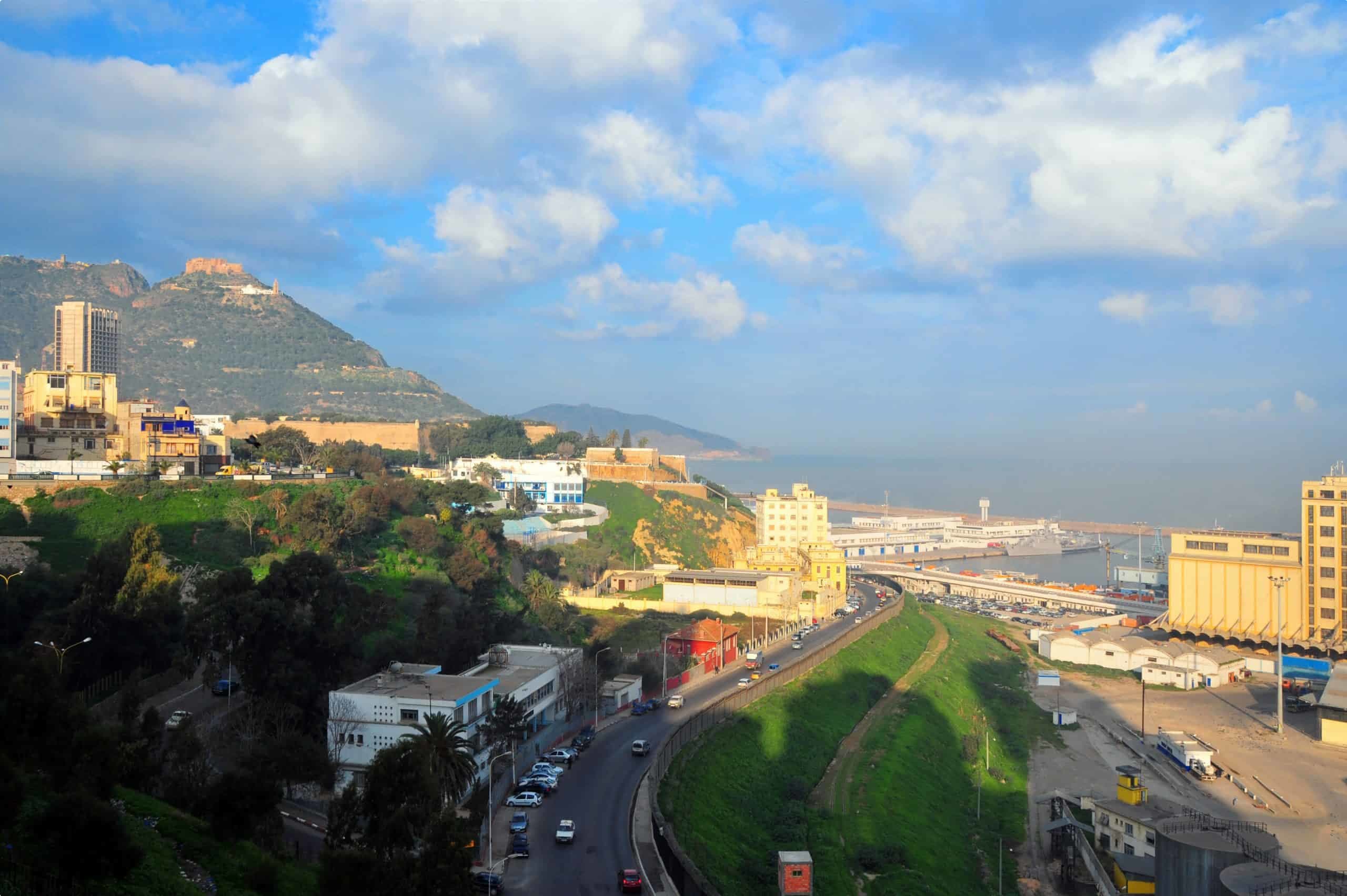
Yves Mathieu-Saint-Laurent was born in Oran, French Algeria, in 1936. Born to French parents, Charles and Lucienne, Saint Laurent grew up in a villa by the Mediterranean with his sisters, Michèle and Brigitte. A shy child, Saint Laurent loved to read books and his mother’s fashion magazines.
Saint Laurent discovered a passion for theatre and fashion at the age of 13, after seeing a local production of Molière’s École des femmes (The School for Wives). Inspired by the sets, he created his own miniature stage set, with characters wearing costumes he had designed. His love of costume and of literature went hand in hand through his teenage years, as in his spare time he entertained himself by designing costumes for the characters in Jean Cocteau and Alexandre Dumas novels.
At 17, Saint Laurent came third in a fashion design contest held by the International Wool Secretariat. Saint Laurent visited Paris for the first time to accept his award, meeting Michel du Brunhoff, the editor of French Vogue. Brunhoff was impressed by his designs and suggested he become a designer.
After finishing high school, Saint Laurent moved to Paris and enrolled in fashion college. He once again competed in the International Wool Secretariat competition, finishing first and third in the dress category – but losing in the coat category to a young German designer, Karl Lagerfeld, who later become a fashion legend in his own right as the creative director of Chanel from 1983 to 2019.
Shortly after his win, Saint Laurent brought some of his sketches to Brunhoff. Noticing similarities with sketches by his friend, the legendary fashion designer Christian Dior, Brunhoff saw the potential for a meeting of minds, and arranged a meeting between Saint Laurent and Dior. Impressed, Dior hired Saint Laurent on the spot.
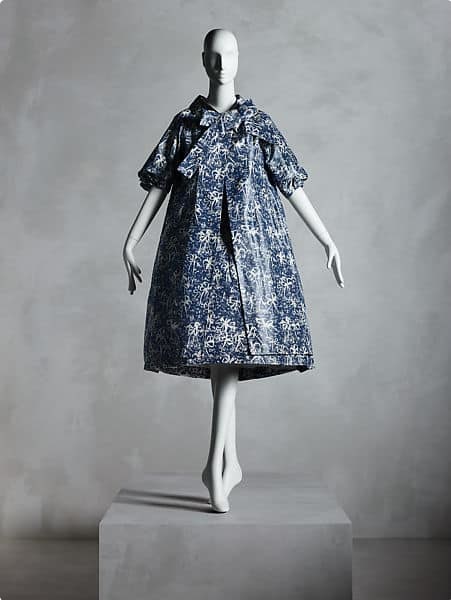
During his time at Dior, the legendary designer was a mentor to the young Saint Laurent. ‘He taught me the roots of my art.’ Saint Laurent would later recall. ‘I owe him a major part of my life, and no matter what happened to me later, I never forgot the years I spent at his side.’
In August 1957, Dior told Saint Laurent’s mother, Lucienne, that he planned to make Saint Laurent his successor as the head designer of Dior. However, nobody expected that Dior would die later that year, of a heart attack at the age of 52, making Saint Laurent the creative director of the world’s most famous fashion house at the age of 21. The baby faced and obviously shy Saint Laurent became an immediate press sensation, tasked with saving the fashion house from financial ruin.
Despite the immense spotlight he was suddenly under, Saint Laurent refused to play it safe. His first collection deliberately set him apart from Dior, replacing the hoop skirts and defined waists of Dior’s iconic New Look with a flowing design he called the ‘trapeze dress’. The new direction was a resounding triumph for the fashion house. A few days later, his success was followed with another life-changing experience when he met the industrialist Pierre Bergé, who would become his life-long business partner and friend, and romantic partner until 1976.
However, Saint Laurent’s following collections would prove controversial. The designs, which drew inspiration from Beatnik fashion and hobble skirts, were savaged by the press and sold poorly.
In 1960, Saint Laurent was conscripted into the French military, to fight during the Algerian War of Independence. Conspiracy theories abounded, claiming that the owner of Dior – the powerful press baron Marcel Boussac – had put pressure on the government to have Saint Laurent conscripted as a way to get rid of him.
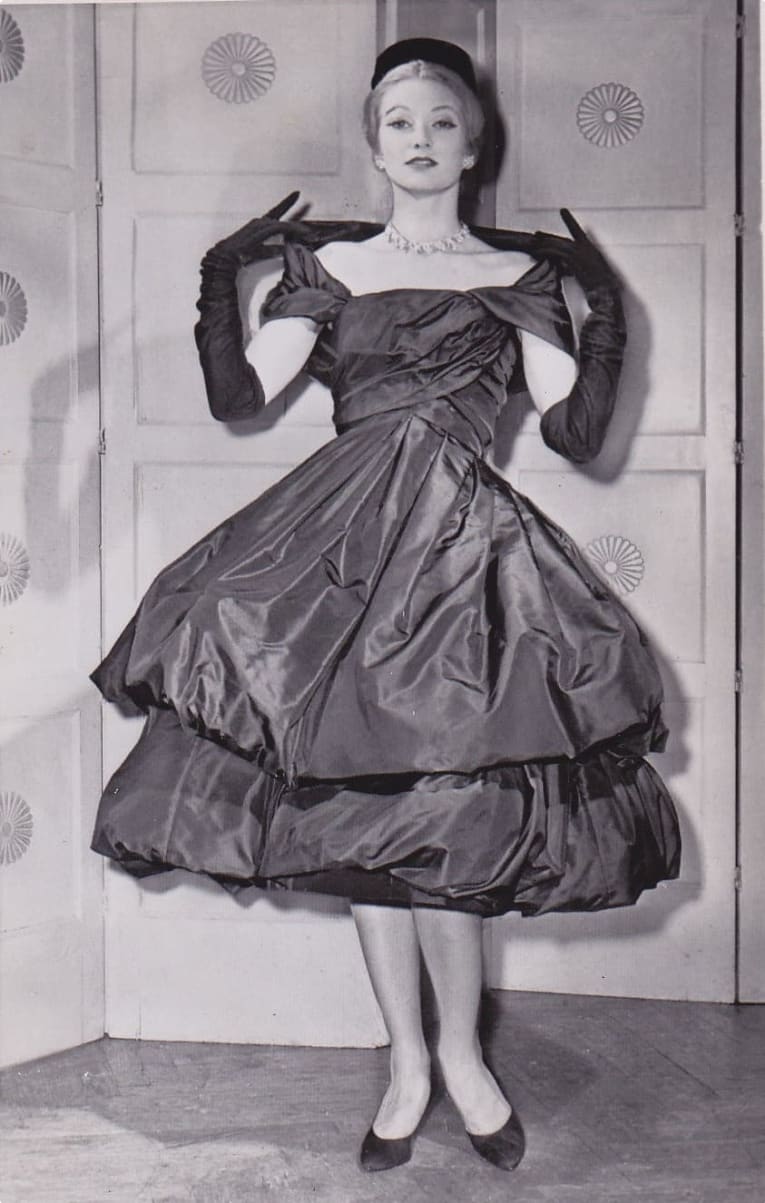
Saint Laurent was in the military only twenty days. As a gay man, he was the victim of extensive bullying and hazing, which led him to be admitted to a military hospital. In hospital, he was greeted with the news that he had been fired from Dior. Unable to deal with the stress, he was moved to Val-de-Grâce military hospital, where he was subjected to electro-shock therapy and given large doses of sedatives and psychoactive drugs. Saint Laurent would later claim that this was the origins of his later drug and mental health problems.
After his release from hospital in 1960, Bergé and Saint Laurent sued Dior for breach of contract and won. With the proceeds, they set up their own fashion house: Yves Saint Laurent (YSL). The new label attracted little attention from the press at first, but slowly built a loyal clientele. Over time, YSL was recognised as one of the up-and-coming designers that embodied the youthful zeitgeist of the 1960s.
Rejecting the strict rules of the couturier era embodied by Dior, the 1960s saw dresses get looser and hemlines shorter, culminating in the iconic mini-skirt. YSL’s innovative designs fit perfectly with the new era. For one fashion magazine, Saint Laurent was ‘the Beatle of the rue Spontini’.
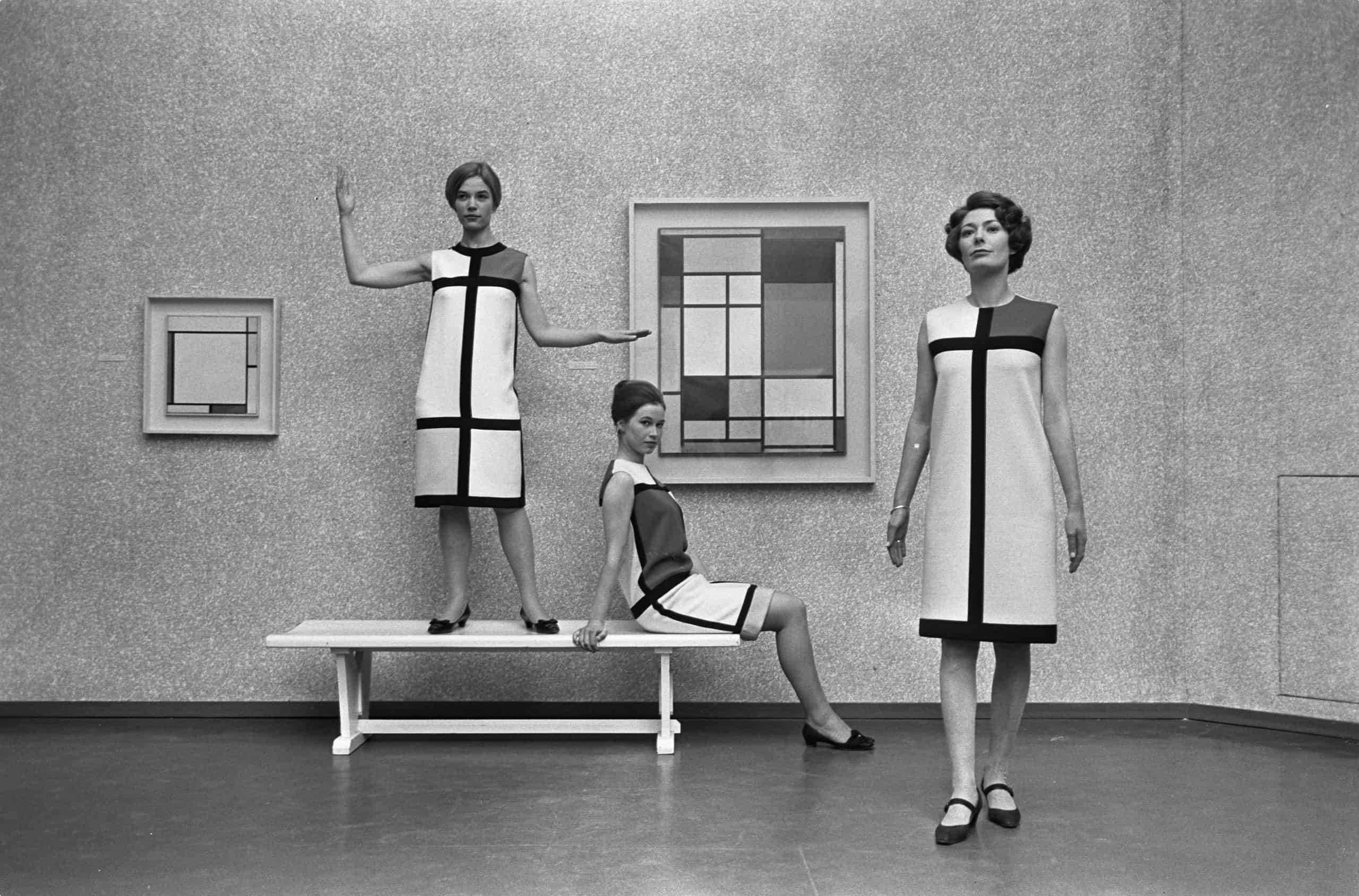
Saint Laurent would achieve a triumph with the Mondrian collection of shift dresses, debuted in 1965. Inspired by the abstract art of De Stijl artist Piet Mondrian, the bright colours, geometric lines, and simple shapes embodied the look of the 1960s. By taking inspiration from Mondrian, Saint Laurent melded traditional high art and fashion, making an argument for his dresses as three-dimensional canvases that were as powerful and artistic as the original.
Saint Laurent’s next collection would prove even more innovative, paving the way for the greater freedom of women’s fashion in the 1970s. His Le Smoking was the first evening suit for women, a black tuxedo accompanied by a ruffled white shirt. The look broke all the rules of couture, the first time that pants for women had been included in a couturier’s evening collection. Women wearing it were refused entry at restaurants, with one – the socialite Nan Kempner – notoriously removing the pants and wearing the blazer as a mini dress when challenged at one New York restaurant.
By the 1970s, Le Smoking became hugely popular, embodying the ethos of a new generation of women who rebelled against the conservative gender roles of the 1950s. Saint Laurent would later sum up the impact of his designs, stating that ‘Chanel freed women, and I empowered them.’
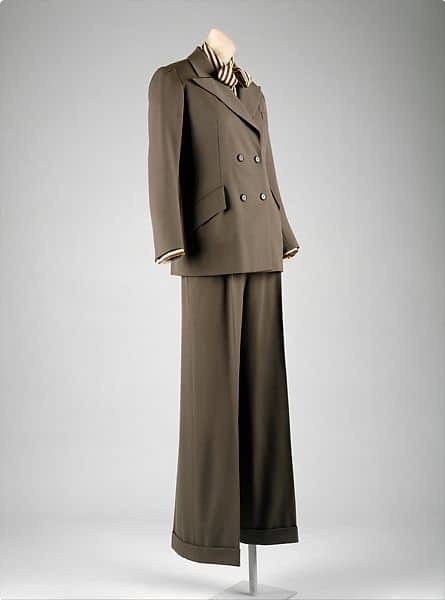
However, behind the success of his designs, Saint Laurent’s personal life was turbulent. He became part of the international ‘jet set’ of the 1960s and 1970s, partying at night clubs such as Studio 54. He was known to be a heavy drinker and user of cocaine and struggled with the pressure of designing four collections each year.
In 2001, Saint Laurent was awarded the rank of Commander of the Légion d’Honneur, the highest order of merit for civilians and military in France. He retired the following year, and became increasingly reclusive, living primarily in Normandy and Morocco. He also created a foundation with Bergé to preserve and trace the history of his fashion house.
Saint Laurent died of brain cancer on 1 June, 2008. Just a few days earlier, he had entered into a civil union with his long-term business and romantic partner, Bergé.
The Musée Yves Saint Laurent Paris opened on October 3, 2017. The museum was the fulfilment of a long-term goal for Bergé, who began collecting Saint Laurent’s archives in 1964, accumulating over 5,000 pieces and 150,000 accessories and sketches. Though sadly Bergé, who passed away in 2017, did not live to see his vision become reality, the result is as he designed it, a moving testament to the long partnership between him and Saint Laurent.
Housed in the elegant 19th century hotel particulier (mansion) that was the label’s headquarters and creative space since 1974, the museum places Saint Laurent’s work within the historical and cultural context in which it was created. On the ground floor of the mansion, Saint Laurent’s most famous works are displayed in the grand rooms where his celebrity clients, such as Nan Kempner and Catherine Deneuve, selected their custom wardrobes. On the second floor, Saint Laurent’s studio has been opened to the public to the first time. The designer’s desk remains virtually untouched, covered in fabric swatches, sketches, and precious personal objects such as the walking stick of his mentor, Christian Dior.
Yves Saint Laurent in Morocco:
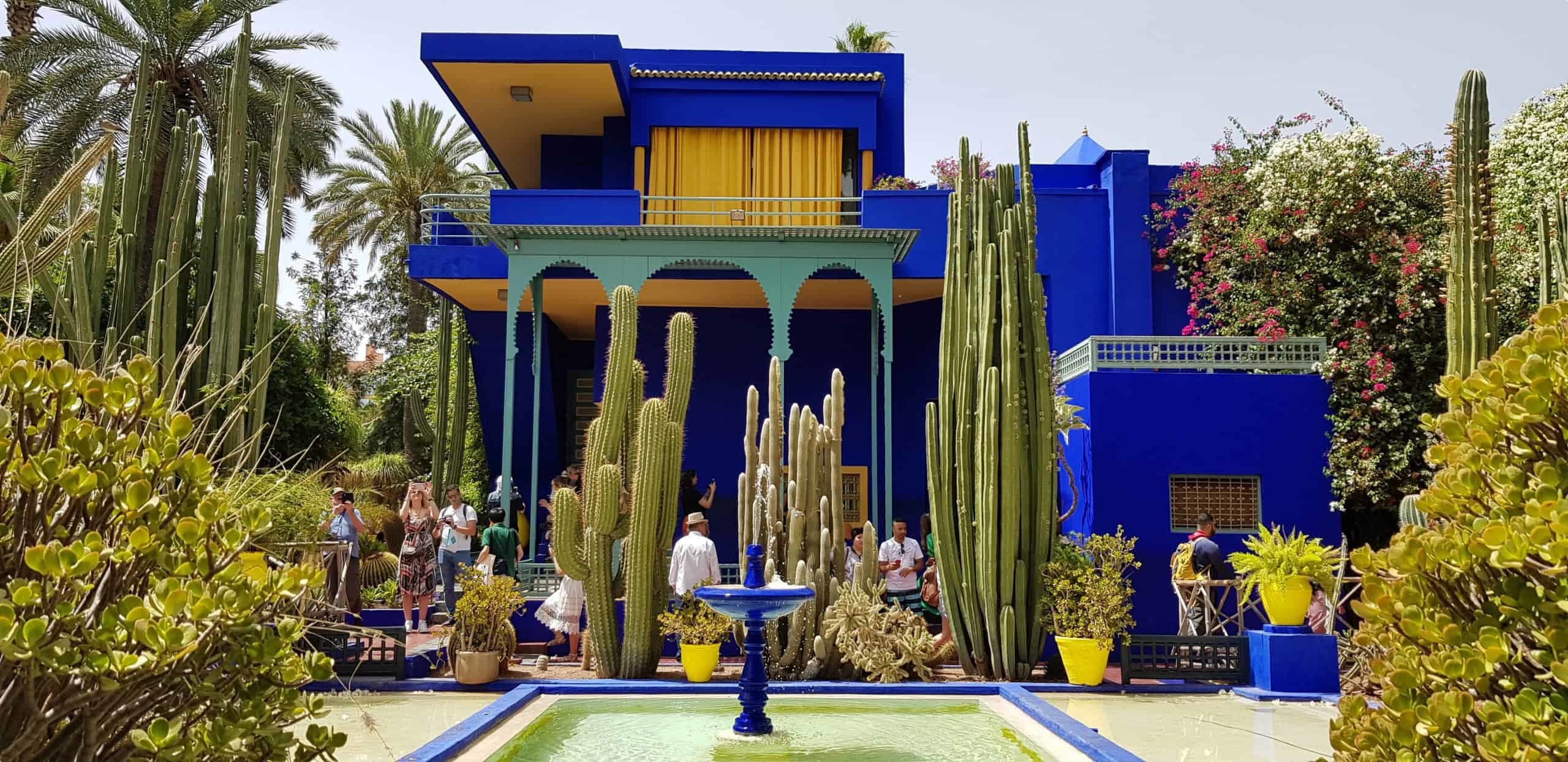
Born by the Mediterranean in Oran, Algeria, Yves Saint Laurent maintained a strong connection to North Africa throughout his life. In 1966, he and Pierre Bergé first visited Morocco. By the end of the trip, they had fallen in love with the country, and bought a house in the Medina (Old Town) of the city, which would become a destination for artists and celebrities including Andy Warhol, Paul and Talitha Getty, and Saint Laurent’s muse Loulou de la Falaise. Saint Laurent took inspiration from the colours of the Moroccan landscape, and incorporated African motifs into his designs. Understanding how African art had inspired previous modern art movements such as cubism and Art Deco, Saint Laurent refracted African motifs through the lense of modernity.
In the 1980s, Saint Laurent and Bergé bought and saved the Jardin Majorelle, the residence of the French Orientalist artist Jacques Majorelle. In the 1920s and 1930s, Majorelle had built his ideal artist’s retreat, a Cubist villa designed by the French architect Paul Sinoir, surrounded by overgrown botanical gardens. After Majorelle was forced to sell in the 1950s, the garden fell into disrepair until Saint Laurent and Bergé discovered it in the 1980s.
After Saint Laurent’s death, the mansion and grounds opened to the public, and is now a major centre of cultural life in Marrakesh. It includes an extensive museum devoted to the culture of the Berber people of Morocco; a collection of Islamic art, tapestries, and ceramics; a wing devoted to Majorelle’s work, and as of 2017, a wing devoted to the inspiration of North Africa on Saint Laurent’s couture. The Majorelle Garden is visited as part of Odyssey Traveller’s guided tour of Morocco.
Discover Paris fashion with Odyssey Traveller:
Since 1983, Odyssey Traveller has been specialising in educational group tours for mature and senior travellers. Each Odyssey guided tour is tailored for customers who love to learn as they travel, as every tour guide is chosen by our tour director for their expertise on history, art, or local life and culture that they share with the group. Our tours are for small groups of around six to twelve like-minded people. Each tour includes accommodation, expenses associated with museums and other sights, tipping, and many of our meals. Most Odyssey groups move as a bus tour in a modern, comfortable coach, but we also offer tours – such as this city tour – that primarily travel by public transport.
This in-depth tour of Paris, 21 Days in Paris, is designed to give you an authentic experience of the ‘city of light’. You will live like a Parisian, staying in a self-catered apartment and shopping for groceries and goods at one of the many local markets.
If you’re a fashion lover, this sightseeing tour is ideal for you. In addition to our visit to the Musee Yves Saint Laurent, we see the Palais Galleria, the only musuem totally devoted to Paris fashion, and make a walking tour of the fashion houses of the Champs Elysees.
At the same time, our tour of Paris delves into the art, literature, and history of the city. We cross the Seine River to see the Latin Quarter and Saint Germain des Pres haunts of great writers such as Ernest Hemingway and James Joyce. We visit Victor Hugo’s 19th century home and explore his inspiration at Notre Dame cathedral (famously featured in The Hunchback of Notre Dame) and head to the to the bohemian neighborhood of Montmartre, where artists explored the grittier side of Paris at the Moulin Rouge, enjoying sweeping views of the city from the basilica of Sacre Coeur. We also make a day trip to the city of Amiens, home to a UNESCO World Heritage listed cathedral and the late-19th century home of Jules Verne.

With over 297 museums, art galleries, and sights of historic interest, Paris has the most cultural institutions in the world. While some are immediately familiar – the Musee du Louvre (Louvre Museum), the Eiffel Tower, the Arc de Triomphe and the Palace of Versailles (including Marie Antoinette’s Hamlet) – others are lesser known but equally worthwhile. Our tours in Paris aim to bring you to some of the city’s hidden gems. We see Marcel Proust’s bedroom – which inspired Yves Saint Laurent – at the Musee Carnavalet; the Marmottan Monet Museum, a collection of impressionist paintings to rival the Musee d’Orsay; and attend an evening concert at Palais Garnier (Opera Garnier), immortalised in The Phantom of the Opera. On a day tour, we visit the Chateau de Vaux le Vicomte, a grand baroque mansion to rival Versailles. We also delve into the history of Paris, seeing the medieval heart of the French capital at Sainte Chapelle and Notre-Dame Cathedral, and make a walking tour of Latin Quarter sights associated with Enlightenment thinkers. Finally, we see the vast Place de la Concorde, where Louis XVI and Marie Antoinette were executed (among others) during the French Revolution.
Our trip also gives you plenty of time for independent Paris sightseeing, whether that be seeing the Eiffel Tower or Versailles Palace for the first time, a river cruise on the Seine, exploring the outer areas of the Ile de France on a bike tour, or enjoying a food tour of Paris’s many markets.
If you’re seeking a guided tour that goes beyond the usual Paris sightseeing to explore the city in depth, think about choosing Odyssey Traveller for your first (or next) trip to Paris. For more information on our tours, click here.
Articles about France published by Odyssey Traveller
- Exploring France by Rail
- Ten of the best travel books on France
- Ten things to do in France when you visit
- Designing Paris
- Paris: leaders and landmarks
- Guillamot prevents the collapse of Paris
- The elegant arcades of Paris.
- Questions about France
- Studying Gargoyles and grotesques
- Around the world in six coffees
- Ten of the best French cookery books.
- Ten of the Best art galleries in Europe to visit
- A guide on France for mature travellers
- Loire Valley History
External articles to assist you plan your visit to France
Related Tours
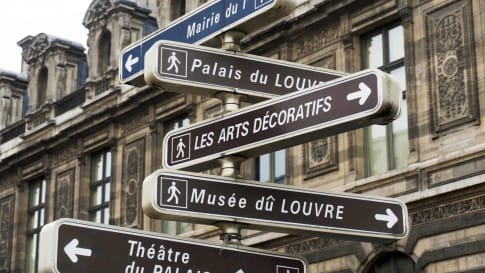
21 days
Mar, SepExplore Paris | 21-day Small Group Tour Exploring Parisian Life
Visiting France
On this small group tour of Paris, travellers take the time to join local guides to learn about the destinations within this city. Authentic experiences with like minded people and an Odyssey tour leader. Staying in apartments this European tour immerses itself in Paris' history, art, and culture in the city of light.
From A$15,325 AUD
View Tour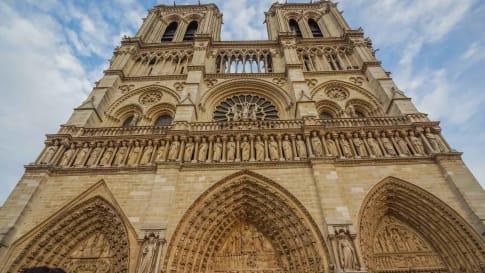
21 days
May, OctHistory of France by Rail | Escorted Small Group Tour for Seniors
Visiting France
French History by Rail small group tour is based on Ina Caro’s book of the same name. Participants live in central Paris, using apartments as a base, living as the locals do, whilst meeting each day as a small group to journey by rail and TGV to the beautiful medieval centres of France.
From A$17,595 AUD
View Tour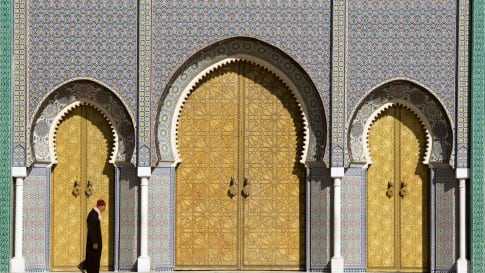
20 days
Apr, Oct, MarMorocco tour for senior travellers
Visiting Morocco
Embark on an unforgettable journey through Morocco: A Gateway to a world of vibrant colors, cultural diversity, and endless wonder. Join our escorted small group tour designed for senior travellers, whether you're a couple or a solo adventurer, and immerse yourself in the captivating allure of Casablanca, Fez, Meknes, Rabat, Marrakech and beyond. Experience the richness of Moroccan traditions and heritage as we explore this enchanting destination.
From A$11,915 AUD
View Tour

